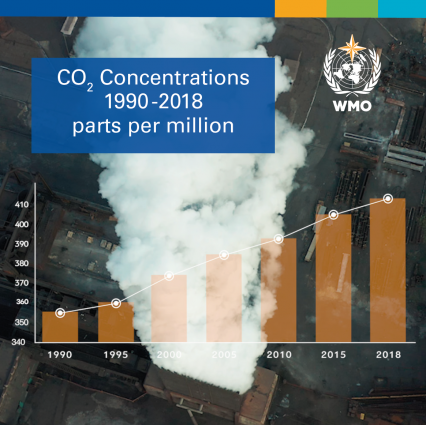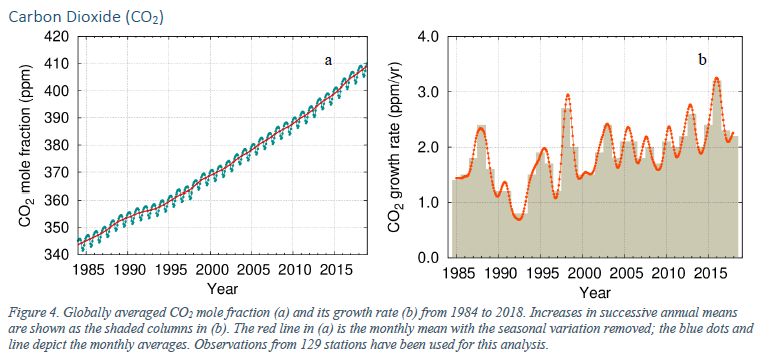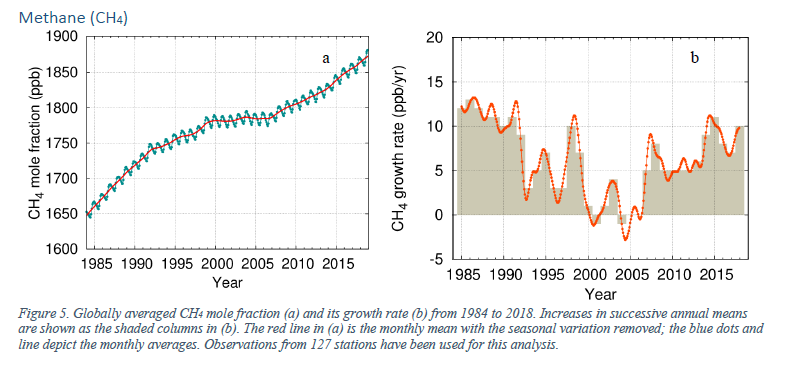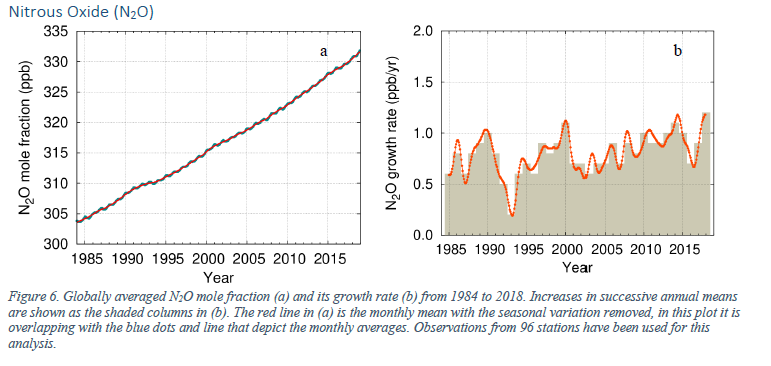Greenhouse Gas Concentration in Atmosphere at Record High: Report

Image Courtesy: WMO.
The Greenhouse Gas Bulletin released by WMO (World Meteorological Organisation) is worrisome in many aspects. The report was prepared as an assessment of the state of greenhouse gas emission, which is one of the primary sources of global warming.
It says that levels of greenhouse gases in the atmosphere have reached a new record. The bulletin showed that the global averaged concentrations of carbon dioxide reached 407.8 ppm (parts per million) in 2018, which is a continuous surge from 405.5 ppm in 2017.
The increase in carbon dioxide during 2017-2018 closely resembled that from 2016-2017 and was just above the then average level during the last decade. It needs to be mentioned here that the global carbon dioxide level had crossed the significant and symbolic mark of 400 ppm benchmark back in 2015. The current trend shows that since 2015, the greenhouse gas level is showing only a steady increase.
Carbon dioxide can stay in the atmosphere and the oceans as well for centuries or even for longer. The incessant release of greenhouse gases in the atmosphere hints that global warming will further be pronounced with climatic change effects becoming more and more prominent with extreme weather events, rise in sea levels, wildfires and so on.
It may recallled that the last time the Earth experienced such a level of carbon dioxide engulfing the atmosphere was 3-5 million years ago. The other scary things during that period were exactly the same that we fear in our future due to climate change—temperature was 2-3 degree Celsius higher than what we have today, sea level was also 10-20 meters higher than now.
Carbon dioxide is the greenhouse gas that traps heat and as this gas is a very long-lived gaseous species, the heat trapped by them endures for quite a long time. In fact, carbon dioxide accounts for almost 80% of all the greenhouse gases that are responsible for causing warming.
The bulletin says that fossil fuel burning is the primary cause for rising carbon dioxide concentration in the atmosphere. It reads—“ Fossil fuels were formed from plant material millions of years ago and do not contain radiocarbon. Burning them will add to the atmosphere radiocarbon-free CO2, increasing CO2 levels and decreasing its radiocarbon content. And this is exactly what is demonstrated by the measurements.”

Image Source: WMO Press Bulletin.
METHANE
The second most important long-lived greenhouse gas is methane. The bulletin reveals that atmospheric methane reached a new high of about 1,869 parts per billion (ppb) in 2018 and is now 259% of the pre-industrial level. For methane, the increase from 2017 to 2018 was higher than both that observed from 2016 to 2017 and the average over the last decade. Approximately 40% of atmospheric methane comes from natural sources (e.g., wetlands and termites), and about 60% comes from human activities like cattle breeding, rice agriculture, fossil fuel exploitation, landfills and biomass burning.

Image Source: WMO Press Bulletin.
NITROUS OXIDE
Another pollutant that the assessment took into consideration is nitrous oxide. This gas plays an important role in the destruction of the stratospheric ozone layer which protects us from the harmful ultraviolet rays of the sun.
“Nitrous oxide (N2O) is emitted into the atmosphere from both natural (about 60%) and anthropogenic sources (approximately 40%), including oceans, soil, biomass burning, fertilizer use, and various industrial processes.
Its atmospheric concentration in 2018 was 331.1 parts per billion. This is 123% of pre-industrial levels. The increase from 2017 to 2018 was also higher than that observed from 2016 to 2017 and the average growth rate over the past 10 years”—the Bulletin concludes.

Image Source: WMO Press Bulletin.
Get the latest reports & analysis with people's perspective on Protests, movements & deep analytical videos, discussions of the current affairs in your Telegram app. Subscribe to NewsClick's Telegram channel & get Real-Time updates on stories, as they get published on our website.
























